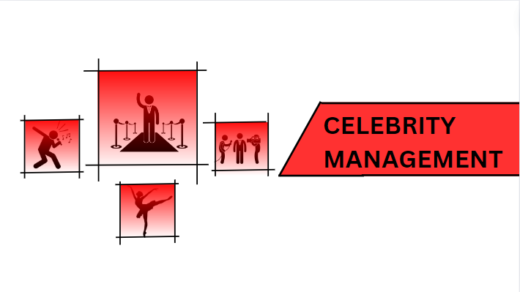Effective media relations can significantly enhance your brand’s visibility and influence. By developing and maintaining strategic relationships with journalists and media professionals, you can secure valuable coverage and position for brand favorably in the consumers eye. This guide will provide you with practical insights into how media relations work, including how to identify key media contacts, craft compelling pitches and measure the impact of your efforts. With these strategies you will be well equipped to boost your brand presence and engage more effectively with your target audience.
8 tips to utilize media relation for brands.
Crafting Your Brand’s Story
Building Media Relationships
Tailoring Your Pitches
Leveraging Press Releases
Preparing for Media Interactions
Engaging with Online Media
Tracking Media Coverage
Adapting to Industry Changes
Crafting Your Brand’s Story
Crafting a compelling brand story is essential for a successful media relations strategy. Your narrative should slowly showcase your product’s innovation and impact unique qualities. Clearly highlight what differentiates your offering. why it’s significant and how it benefits your target audience. This engaging and well articulated story should form the core of all your media communications, drawing journalists and consumers attention and making your brand stand out. By focusing on these key elements. you create a memorable and impactful message that resonates with both the media and your audience.
Building and Maintain Media Relationships
Building and maintaining strong media relationships is important for effective media relations. Start by identifying journalist, editors and influencers who focus on your niche. Take the time to understand their interests and preferred story angles and the types of content they typically cover. Engage with them through social media attend industry events and offer valuable insights or exclusive information related to your field. Personalize your pitches to align with their interests and needs making it easier for them to see the relevance of your story. Consistent interactions help keep your brand top of mind when they are seeking new stories, increasing the chances of securing media coverage and building long term and mutually beneficial relationships. These relationships can lead to ongoing media coverage and strengthen to your brand’s presence in the industry.
Tailoring Your Pitches
Tailoring your pitches is important for capturing a journalist’s attention and securing media coverage. A generic press release is often overlooked so it’s essential to customize your approach for each journalist or media outlet. Start by researching the specific topic and previous coverage of the journalists you’re targeting. Understand their audience and the type of stories they typically feature. When you crafting your pitch, highlight how your story aligns with their focus and offers value to their readers or viewers. Provide relevant details that connect your brand or product to their current coverage themes or interests. Personalize your pitch by addressing the journalist by name and referencing their past work to show original engagement. A well researched and tailored pitch demonstrates that you’ve put effort into understanding their needs and increasing the chances of your story being noticed and covered by media.
Leveraging Press Releases
Press releases remain a powerful tool when used strategically and effectively. To maximize their impact and ensure that each press release is clear and concise and focused on delivering essential information. Start with a compelling headline that grabs attention and a lead paragraph that briefly outlines the most important details. Include engaging quotes from key stakeholders and relevant data to add credibility and depth to your story.
Structure your press release in a way that highlights the news value and answers the who, what, where, when, why, and how. Distribute the release through targeted channels such as industry specific media lists press release distribution services and direct outreach to relevant journalists. By strategically targeting the right media contacts and using a well-crafted press release. you can effectively communicate your news and increase the chances of coverage.
Preparing for Media Interactions
To improve the impact of media coverage thorough preparation is essential. Before engaging in interviews or appearances, guide key messages and talking points to ensure clarity and consistency. enhance your communication style to the medium whether it’s a phone call, television segment or written response while maintaining your core message. Anticipate potential questions and prepare concise, informative answers. Effective preparation not only enhances your confidence but also helps establish a positive brand image, build audience trust, and convey professionalism. Consistent, well thought out communication boost your credibility and support with your audience.
Engaging with Online Media
Contain digital media strategies into your media relations approach is important for expanding reach and engagement. Start by creating compelling content for blogs and online publications that resonate with your target audience. create a content calendar to regularly update your blog with relevant and valuable insights, industry news or thought leadership pieces. Influence online publications to distribute press releases and articles that highlight key milestones or developments. Engage with readers through comments and social media to foster a sense of community and responsiveness. Utilize SEO techniques to ensure your content is discoverable and aligns with trending topics. Collaborate with influencers and digital media personalities to amplify your message. By integrating these strategies, you enhance visibility and build credibility and create more interactive and strong media relations.
Tracking Media Coverage
Tracking media coverage is essential for evaluating the effectiveness of your media relations efforts. Utilize media monitoring tools to systematically track mentions of your brand across various platforms including news outlets, blogs, and social media. These tools help aggregate and analyze coverage, providing insights into the frequency, sentiment and reach of your mentions. Analyze the data to assess the impact of your media interactions look for trends in positive or negative coverage and identify influential media outlets and key opinion leaders. Use these insights to refine your strategies and improve messaging, and address any issues on time. Regularly reviewing coverage also helps guide public perception and measure the return on investment for your media relations activities. By influencing these tools, you can make data driven decisions, enhance your media strategy and ensure that your communications align with your overall brand objectives.
Adapting to Industry Changes
Adapting to industry changes is important for maintaining effective media relations. Stay informed about shifts in the media landscape such as emerging platforms, evolving audience preferences or new journalistic practices. Regularly review industry reports and follow media trends and engage with thought leaders to anticipate changes. Adjust your strategy to leverage new media opportunities refine your messaging and align with current trends. Embrace digital tools and platforms that enhance outreach and engagement. By staying agile and responsive to these changes, you ensure your media strategy remains relevant, impactful, and capable of achieving your communication goals effectively.
Enhance media relation strategy today
Enhance your media relations strategy today by integrating emerging trends and tools. Monitor industry shifts or update your messaging and dominance new platforms for maximum impact. Act now evaluate your current approach adapt to the latest media landscape and connect with your audience more effectively. Take next step to elevate your media presence and drive success with us.
how can we maintain media relation for brands?
Maintain media relations by consistently providing valuable content, responding promptly to media inquiries, and building personal connections with journalists. Regularly update them on your brand’s news and developments.
Why media relation important?
Media relations are important because they help build brand credibility, increase visibility, and generate positive press coverage, which can enhance public perception and drive engagement.
what is the role of media relation in company?
Media relations help a company shape its public image, manage communication during crises, secure positive press coverage, and build relationships with journalists to amplify its message and reach target audiences.



